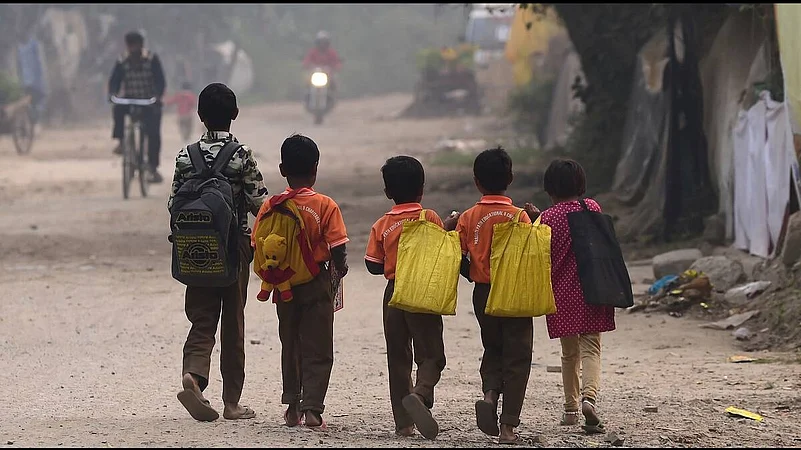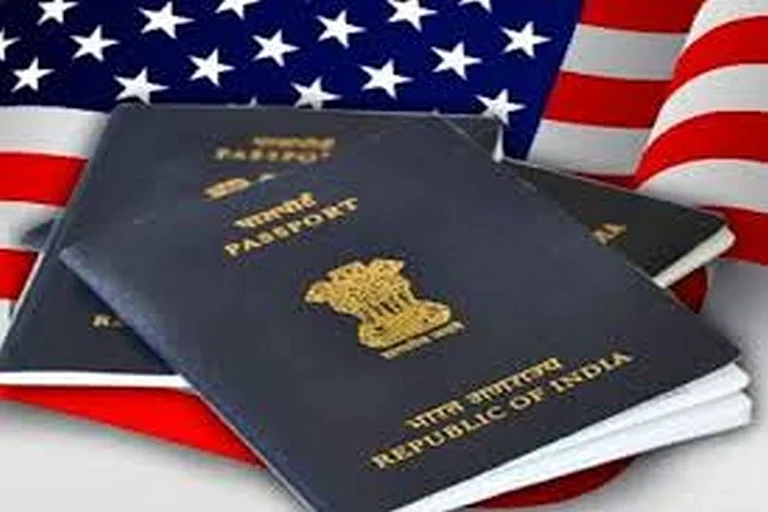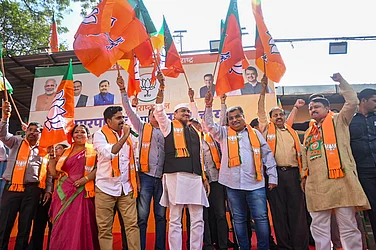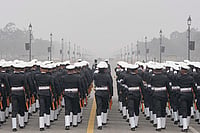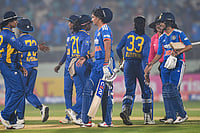For us, the “mainland” Indians, the states of the Northeast are those exotic places with stunning scenic beauty, which promise a much-needed reprieve from our daily hustle. A place with beautiful locales so suited for our Insta stories. When witnessing one of these vacations, either mine or someone else’s, I cannot help but remember that young boy from Darjeeling, who told the teenager me, "Don’t just visit us. Experience our story and please talk of our struggle." This was during the days of the Gorkhaland agitation. Regretfully, that did not happen.
I initially started 'Children of the hidden land' as a different story- that of a young boy, his conscription as a child soldier and his escape from the militancy. That story did not feel like it was for me to tell.
While I abandoned the project, I continued living it every day. At first, just in my head as an irritant, and then as a niggling shoe bite that had to be addressed. Then I started speaking to people from Manipur and the neighbouring areas. As destiny would have it, I started chancing on more people from the northeast in my life in Bengaluru, talking of their long walks as they went to school, of how different the people from the hills were from those in the valleys. The place of exotic beauty and tragic violence, became a land of people like you and me, with their daily lives quite unlike yours and mine.
"When we first start going to school, we are taught how to defend ourselves from the teargas shells, said a Meitei woman," a friend’s friend from Imphal said while talking about her childhood.
"We rarely completed our syllabus and somehow passed school, said a Naga woman, an assistant to a skin doctor, talking about the frequent strikes and shutdowns that interrupted her formative education years," she added.
I watched recorded interviews of people from the Northeast.
An artist from Imphal spoke about how his soul was riddled with bullets when asked why his abstract art felt so violent.
But perhaps the most memorable was my interaction with a 7-year-old boy from Mizoram at a school I volunteered at. This school was part of a children's home for orphan and destitute children in Bengaluru’s outskirts, where, for some reason, a large percentage of students were from the Northeast. Like all classes, my grade two was also a strange mix of polite, mischievous, attentive and sleepy kids. This smiling, attentive boy was always the first one to respond—trying his best to answer “Story Auntie’s” questions.
While discussing nouns and occupations one day, I asked my students what they would like to be when they grew up. The bright young boy stood up, thumped his chest and said with obvious pride, "I want to be a terrorist".
I tried to hide my shock and enquired "Why?"
He said a little incoherently that it would be a nice adventure where he would get to climb and hide in the mountains.
What worrying evidence of how a very young child from a state where the Armed Forces Special Powers Act, 1958 (AFSPA), was in force, viewed his destiny. Perhaps, the reasons are obvious. The killings of the Naga civilians in the middle of the Hornbill Festival last year, is still quite fresh in our minds. That is not an isolated incident for AFSPA ruled states.
The general narrative is that this is a place that is devoid of any development, with no employment, no basic education or even any kind of security. Analyzing data being my primary, job, I decided to see what the data had to say.
The story this data tells, with a consistently low rating all across India on infrastructure and lack of opportunities is very telling of the attention India pays to the state.

Growing up in this backdrop that is charged with conflict and a daily struggle, perhaps it does not take much for impressionable children to choose insurgency as a calling, often without understanding it.
Two students from the sixth standard in Ningthoukhong Kha, Leikai under the Bishnupur Police Station were lured by just eatables, sandals and a promise of a job in a supermarket. Let that sink in for a moment. Just eatables, sandals and a promise of a job in a supermarket.
And this is not a stray incident. In search of employment and money, many women and girls from the Northeast move to uncertain destinations with unknown people. When coercion doesn’t work, there have been incidents of deception and abduction as well. A Guwahati-based NGO along with the police revealed that 20 per cent of those involved in prostitution in the region are aged between 11 to 17 years.
Manipur has now emerged as a source, as well as a safe transit for smuggling and child traffickers. It is then, not uncommon for these children to be recruited as child soldiers, perhaps in exchange for some smuggled goods—like gold or drugs. About 9,500 went missing from 2007 to 2014 in Assam, out of which only 3,840 were rescued from different places in the country either by the police or by NGOs working for children.
Once recruited into the groups, they might start off with “light” duties at the camp like ground levelling, fetching water, collection of firewood, cooking, washing, cultivation, construction of barracks for shelter, etc. But very quickly, and some right away, they move on to patrolling duties, sentry duties or even military intelligence duties like a collection of information on security forces and their activities. Those who escape also talk about how they were placed directly to do operational duties like laying ambush, planting bombs and even attacking security posts.
Priyadarshini Laishram, Additional Superintendent of Police, Manipur, has tried to estimate the number of child soldiers employed within the Northeast by using various sources of data, which are published in her paper “Conflict and Child Soldiers—Manipur case” (2017). One such data source is the number of returnees which estimates that between the year 2004 to 2014, out of 1251 cadres who surrendered from Manipur, 270 were children—a horrific 21.58 per cent. At the time of recruitment, some of these kids were as young as 8 years old!
At 8, most of our kids don’t even go to the local neighbourhood shop, unescorted.
Chinki Sinha’s hard-hitting piece “Child Soldiers of Manipur” in 2013, told us the story of Robert (as named in the article) and his friends, who boarded a bus expecting a job in Bangkok but ended up recruited in a camp by insurgents. The story of their escape through Robert’s diaries are a revelation.
But the mainstream media coverage about the Northeast is far too peripheral and far between.
I wanted to use the lens of fiction to reach out to our teenage audience and tell the story of Henthoiba, April and Shalini. April is a 15-year old girl at a school in Imphal, whose best friend Henthoiba goes missing. She is a precocious child, who has to grow up quite quickly due to almost absentee parents. My story is about her determination to find Henthioba and retain a bit of her childhood. And in this, she finds an ally in Shalini - her new schoolmate and the daughter of an army man recently posted in Imphal.
Through their story, I hope to communicate the complex lives of children in the Northeast, not too different from us, for whom real life is much stranger than fiction could ever be. For I believe that it is only through stories that we understand the life that is so distinct from ours.






